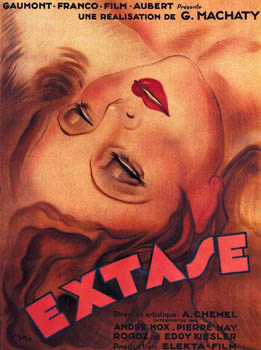# Hedy Lamarr: The Ingenious Star Behind Modern Communication
Written on
Chapter 1: A Star and a Genius
Hedy Lamarr, the Austrian-American actress often referred to as “the most beautiful woman in the world,” is celebrated on her birthday, November 9, for her groundbreaking contributions to technology that have paved the way for contemporary WiFi, GPS, and Bluetooth systems.
You might be surprised, but there's much more to her story than her stunning looks. With a remarkable IQ estimated at around 140, the Vienna-born Hedwig Eva Maria Kiesler began her engineering studies at a young age, although she eventually put her academic pursuits on hold to focus on acting.

A Controversial Rise to Fame
At the age of 18, Lamarr starred in the Czech film Ecstasy, which included scenes that stirred significant controversy due to their explicit nature. Although this film catapulted her to fame, it was banned for two decades following its release in 1933, facing condemnation from Pope Pius XII and a ban by Hitler in Germany.
During her marriage to Friedrich Mandl, a German arms dealer, she found herself in a stifling environment. Yet, during this time, Lamarr managed to continue her self-directed studies in engineering. Utilizing her husband's connections, she gained insights into weaponry technology, which she later shared with the U.S. government for wartime efforts.
Innovation Amidst Adversity
During World War II, upon learning about the tragic loss of 80 children due to a German U-boat attack, Lamarr collaborated with avant-garde composer George Antheil to devise a “secret communication system” for the U.S. Navy. Their innovative concept involved “frequency hopping” across 88 different frequencies, making it nearly impossible for the enemy to detect or disrupt radio-controlled torpedoes.
She secured a patent for this technology in 1942.

However, despite the Navy recognizing its potential, this “spread spectrum” technology was not utilized for another decade. It ultimately played a crucial role in the 1950s for tracking enemy submarines and was further employed during the Cuban Missile Crisis in 1962.
A Hollywood Career
After fleeing Germany, Lamarr moved to Paris and then London in 1937, where she caught the attention of MGM's Louis B. Mayer. She successfully negotiated a lucrative contract and adopted the name Hedy Lamarr, inspired by silent film star Barbara La Marr.
Her Hollywood debut was a triumph, and it’s rumored that her enchanting features influenced the creation of Disney's Snow White. However, she often found herself typecast as a glamorous seductress. Her role as Delilah in the 1949 film Samson and Delilah marked MGM's most profitable project to date, and she shared the screen with numerous Hollywood legends.
Between filming, Lamarr would frequently tinker with her inventions, even advising Howard Hughes on the design of aircraft wings based on her studies of nature.
Recognition for Her Genius
Despite her significant contributions going largely unrecognized for many years, Lamarr received the Electronic Frontier Foundation's Pioneer Award alongside George Antheil in 1997. In 2014, she was posthumously inducted into the National Inventors Hall of Fame.

On her 101st birthday, November 9, 2015, Google celebrated her legacy with a special Doodle.
Hedy Lamarr in Popular Culture
In the Mel Brooks film Blazing Saddles, a character named Hedley Lamarr played by Harvey Korman serves as a humorous nod to the actress. The character's name sparked a running joke in the film, which led to Lamarr suing Warner Brothers for $10 million for using her name without consent, ultimately reaching a quiet settlement.

Learn more about the extraordinary life and contributions of Hedy Lamarr in this insightful video, The brilliant mind of Hollywood legend Hedy Lamarr.
Celebrate Women’s History Month by exploring Hedy Lamarr’s incredible journey in the video Women's History Month: Hedy Lamarr.
Bill Petro, your friendly neighborhood historian
billpetro.com
Subscribe to receive future articles directly to your email. If you appreciated this article, feel free to leave a comment!